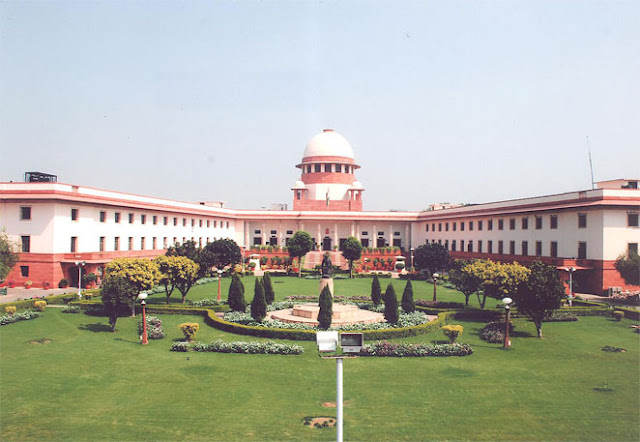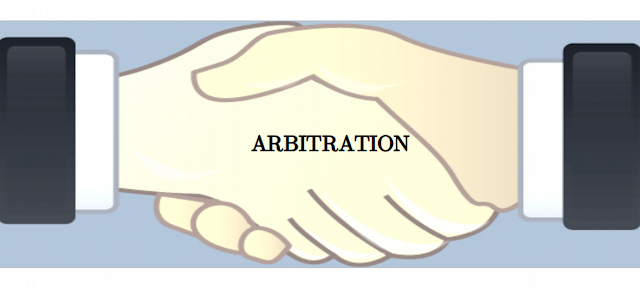SUBSTITUTING AN OPAQUE SYSTEM: IS JUDICIAL PRIMACY A PART OF BASIC STRUCTURE?
 |
| Supreme Court of India | Image Source: fb.com/groups/TheSupreme.Court/ (here) |
The Hon’ble Apex Court has held that the constitutional amendments or statutes cannot damage or destroy the basic structure of the Constitution.1 By subjecting legislature to judicial review, the court limits the extent and couch essential non-legislative checks on the powerful political configurations. Thereby, it entrusts the basic structure or the framework of the Constitution intact. Hence, basic structure theory plays a very critical role in our constitutional jurisprudence2.
The Hon’ble Apex Court has also described that preserving an Independent Judiciary is vital to democracy and constitute as a basic feature of the Constitution.3 It is a set precedent that the Independence of the judiciary is a very crucial part of the basic structure of the Indian Constitution, and hence cannot be compromised at any cost,4 is agreed upon. But, is the primacy of the judges in judicial appointments a part of the basic structure? Or looking at the prevailing collegium system shouldn’t transparency and credibility be conceived as a part of the basic structure? Unfortunately, we would like to answer the second question in negation. Moreover looking at the NJAC judgment, the primacy of the judiciary in the appointment procedure is the most justifiable and the only method of assuring the independence of the judiciary.
In the NJAC Judgment, Justice Khehar peculiarly stated that vesting primacy with the judiciary to the collegium to ascertain the independence of the judiciary is, in and of itself,5 a part of the basic structure. Justice Khehar placed his reliance on the Second Judges case but he failed to remark any component of the judgment in Second Judges case.6 This is relatively not reckoned to be a pragmatic approach, but rather seems supplementary to enshroud the flaws of the collegium system. As rendered by Justice Chelameswar in his dissenting opinion that securing judicial independence via exclusively the judiciary in the appointment procedure has no stance in the constitutional jurisprudence. So, the question arises whether the struck down Article 124A introduced by the 99th amendment infringes the constitution’s basic structure?
The Constituent Assembly Debate which is the foundational place to ascertain the intellect of the constitutional makers. In an amendment passed by M. Pocker Sahib that attempted to make CJI’s concurrence compulsory in the affairs of appointment was univocally declined by the assembly. For the propounded amendment Dr. Ambedkar opined, “I, therefore, think that is also a dangerous proposition”. With all due respect, the Apex Courts contemplating the view of founding fathers of the Constitution is that it would be dangerous to leave such appointments in the hands of the executive of the day, without any kind of reservation and limitation. Counterfactually, wouldn’t it also be dangerous to confer higher judiciary with veto power to make an appointment of the higher judiciary? To interpret consultation as ‘vesting primacy with the judiciary’ under the shield of the basic structure, whereby casting it into concurrence outright contravenes Constitutional makers’ intent. Propelling an arrangement to give exclusive powers that are contrary to Article 1247 and 2178 of the Constitution and its makers’ intent is extremely a regressive step. Hence, the constitution doesn’t countenance the Hon’ble Court, to do is to re-write the constitution to serve9 its own evident end.
Transparency in the process of appointing Judges is highly democratic and vital in nature. But the current collegium system happens to be extremely opaque. This is a substantial drawback of the collegium system, in which no outsider has knowledge about the appointment and transfer of judges. After the Third Judges case, the Memorandum of Procedure of appointing Judges was devised. Ironically, there were no essential components of the procedure mentioned in the actual appointment and transfer of the judges.
In a unique democratic system like that of India, we possess Right to Information and Right to know as a fundamental right. Therefore, democratic governance also anticipates the eminent standard of transparency in the appointment of the Judges and quoting reasons for rejecting the name of the nominees. In the words of the Apex Court, “a single dishonest judge not only dishonors himself and disgraces his office but jeopardizes the integrity of the entire judicial system”.10 If, this transparency and accountability of appointment wouldn’t be practised by our Hon’ble Court, then the credibility of judiciary would be at a large stake and the faith towards the justice system will start deprecating.
_______________
1 Kesavananda Bharti v. State of Kerala, AIR 1973 SC 1461.
2 Basic Structure has developed in many cases like, Minerva Mills v. Union of India, AIR 1980 SC 1789, the parliament amendment was struck down on the ground of basic structure that limited amending power of the parliament; Waman Rao v. Union of India, (1981) 2 SCC 362 law under 9th Schedule have to tested on the touchstone of the basic structure before they were given immunity; Tribunal Cases, the Apex court rendered judicial review as a part of basic structure; IR Coelho v. State of Tamil Nadu, AIR 1999 SC 3179 Art 14, Art 19 and Art 21 were added to the basic structure.
3 See Indira Gandhi v. Raj Narain, AIR 1975 SC 1590, constitutional amendment dealing with the election of the prime minister and speaker was struck down on the grounds of basic structure.
4 Chintan Chandrachud: Debating the NJAC Judgment of the Supreme Court of India: Three Dimension, UK Constitutional Law Association, available at https://ukconstitutionallaw.org/2015/11/03/chintan-chandrachud-debating-the-njac-judgment-of-the-supreme-court-of-india-three-dimensions/
5 Suhrith Parthasarathy, ASSESSING THE NJAC JUDGMENT, 3 Journal of National Law University, Delhi 25, 30 (2015-16) available at http://heinonline.org/HOL/Page?handle=hein.journals/jrnludel3&div=6&g_sent=1&collection=journals#
6 Supra 14.
7 Art. 124, the Constitution of India, Establishment and constitution of Supreme Court,
(1)There shall be a Supreme Court of India constituting of a Chief Justice of India and, until Parliament by law prescribes a larger number, of not more than seven other Judges
(2) Every Judge of the Supreme Court shall be appointed by the President by warrant under his hand and seal after consultation with such of the Judges of the Supreme Court and of the High Courts in the States as the President may deem necessary for the purpose and shall hold office until he attains the age of sixty five years: Provided that in the case of appointment of a Judge other than the chief Justice, the chief Justice of India shall always be consulted:
(a) a Judge may, by writing under his hand addressed to the President, resign his office;
(b) a Judge may be removed from his office in the manner provided in clause ( 4 ).
8 Art. 217, the Constitution of India, available at https://indiankanoon.org/doc/1682952/
9 Suhrith Parathasarathy, A deeply flawed verdict, Suhrith Parthasarathy A collection of my writings, photographs and other work, available at https://suhrith.net/2015/10/17/a-deeply-flawed-verdict/
10 Satyam Rathore & Ankita Rituraj, NATIONAL JUDICIAL APPOINTMENT COMMISSION AN ANALYSIS OF NJAC’S EFFECT ON JUDICIAL INDEPENDENCE IN INDIA, LAW MANTRA International Monthly Journal (2015), available at http://journal.lawmantra.co.in/wp-content/uploads/2015/05/211.pdf


